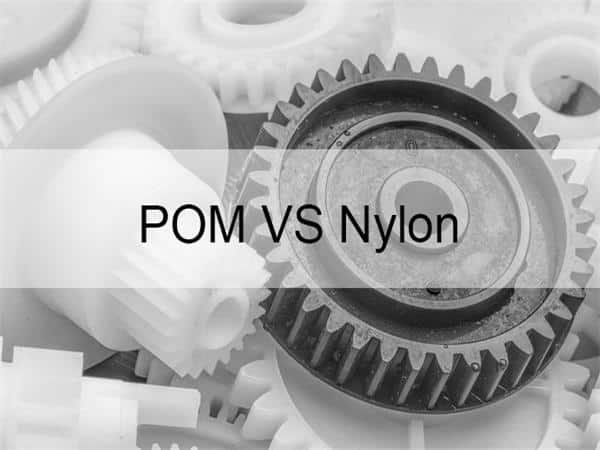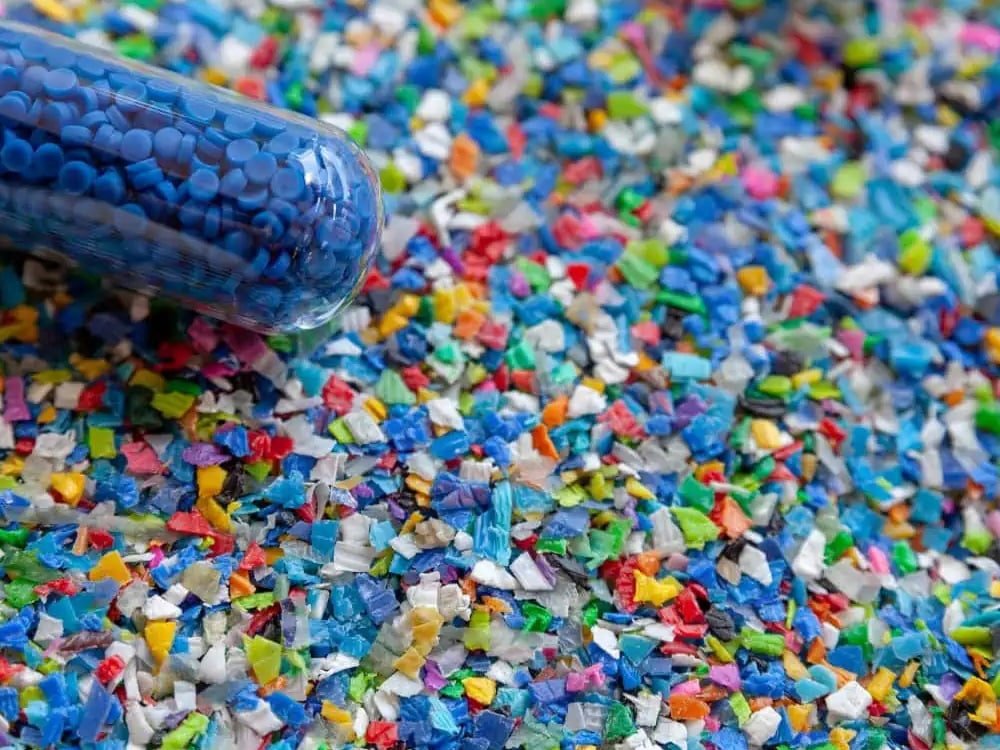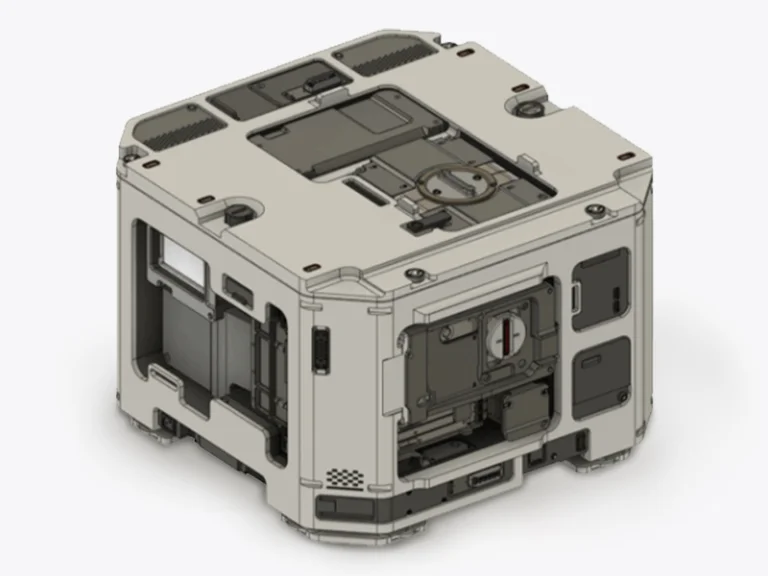In the world of plastic part design, the concept of living hinge design has proven to be a game-changer, especially for manufacturers and engineers focused on injection molding. A living hinge is a single piece of plastic that functions as a flexible joint between two rigid parts, allowing them to pivot and flex without the need for additional fasteners or mechanical joints. This innovation significantly reduces both material costs and production complexity. Living hinges are especially crucial in plastic hinge design, where they are often used in applications that require repeated motion or the need for lightweight, durable components.
What is a Living Hinge?
A living hinge is a specialized component in living hinge design that connects two rigid parts using a thin, flexible section of plastic. This hinge design allows the parts to bend and flex repeatedly without breaking or wearing out. The flexibility of the hinge is an essential characteristic that allows it to operate efficiently in many demanding applications, such as in living hinges plastic used for lids, boxes, and enclosures. Unlike traditional mechanical hinges, a living hinge is made from a single piece of material, often created through injection molding processes, making it both innovative and cost-effective.
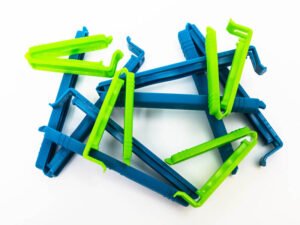
Types of Living Hinge
- Flat Hinge: The most common type, consisting of two straight strips connected by a thin, flexible hinge section. The flat hinge can typically bend up to 180 degrees.
- Double Hinge: Comprises two flat hinges separated by a narrow landing strip. Duble hinge allows for greater flexibility and can rotate up to 360 degrees.
- Butterfly Hinge: Features a single hinge section that allows for a flipping action. Butterfly hinge snaps open or closed once it reaches a certain angle, often used in dispensing caps.
- Bi-stable Hinge: Similar to the butterfly hinge but with three hinge sections instead of one. Bi-stable hinge offers strong opening and closing actions and remains stable in both open and closed positions.
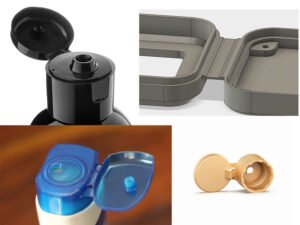
Manufacturing Techniques for Living Hinges
- Injection Molding: This is the most common method for producing living hinges, allowing for mass production of complex shapes. Typically utilizes polypropylene (PP) or polyethylene (PE), which offer the necessary flexibility and durability for repeated bending.
- 3D Printing: Ideal for rapid prototyping, 3D printing allows designers to quickly create and test living hinge designs. Often employs nylon or other flexible materials, although these may not be as durable as injection-molded hinges.
- CNC Machining: While traditionally used for metal parts, CNC manufacturing can also produce living hinge prototypes from various materials. Often involves durable metals or plastics for creating robust prototypes.
Application
The living hinge design is frequently used in products that require consistent and reliable motion, such as in packaging, consumer electronics, and automotive applications. For example, living hinges are commonly found in products like clamshell packaging, flip-top bottle caps, laptop battery compartments, and phone cases.
In addition to everyday consumer products, living hinge designs are also used in industrial applications, such as automotive and medical devices, where durability and functionality are paramount.
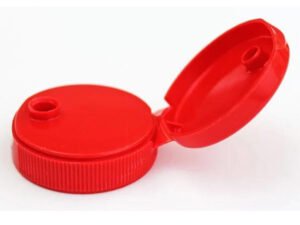
How Does a Living Hinge Work?
Design Principle
The fundamental design principle behind a living hinge lies in its ability to provide repeated motion without the need for additional mechanical components. It is a single, thin section of plastic that connects two rigid parts, allowing them to bend and flex back and forth. Unlike traditional hinges that rely on rotating pins or mechanical linkages, a living hinge is designed to work through the inherent flexibility of the plastic material itself.
When a living hinge is subjected to repeated bending, the plastic stretches and deforms at the hinge area. The critical factor here is that, under ideal conditions, the plastic will return to its original shape once the force is removed, without cracking or losing its flexibility. This ability to bend repeatedly without failure is what distinguishes living hinges from other forms of plastic hinge design. The living hinge design plastic works efficiently because of the natural fatigue resistance built into the material when properly selected.
For this design to function effectively, the hinge must be engineered with the right balance of flexibility and strength. It needs to be thin enough to allow for the required motion, but thick enough to resist tearing or cracking over time. This delicate balance allows the hinge to perform its intended function—whether it’s opening and closing a packaging container, a lid, or a compartment—without premature wear.
Structural Considerations
The design of the hinge section itself plays a critical role in the functionality and longevity of a living hinge. One of the most important structural considerations is the thickness of the hinge. A living hinge that is too thick may not provide the necessary flexibility, while one that is too thin may fail prematurely under repeated bending stresses. The optimal thickness allows the hinge to bend smoothly while also distributing the forces acting on it evenly across the hinge’s surface.
Proper design ensures that the stress from repeated flexing is not concentrated at any single point, which can lead to cracking or breakage. Living hinge design plastic typically incorporates a gradual transition between the rigid parts and the flexible hinge. This smooth transition helps to distribute the stress evenly, reducing the likelihood of wear and tear. Additionally, it is essential to account for the inside radius of the hinge, as sharp corners or tight radii can create stress concentration points that increase the likelihood of failure. Therefore, the living hinge design should incorporate rounded corners and smooth curves to help the hinge endure the stresses of repeated bending.
Material Selection for Living Hinges
Common Materials Used
When designing living hinges, material selection is a crucial factor that directly impacts the hinge’s flexibility, durability, and overall performance. Different types of plastic offer varying degrees of flexibility and resistance to fatigue, making it important to choose the right material based on the application’s requirements.
Polypropylene (PP) is by far the most commonly used material for living hinges. It is favored due to its excellent balance of fatigue resistance and flexibility. Its ability to return to its original shape after deformation makes it an ideal choice for products like flip-top bottles, lids, and various consumer goods. It also offers good chemical resistance and is highly resistant to moisture absorption, which adds to its durability in a wide range of environments.
Polyethylene (PE), while similar to polypropylene, is typically used for larger, less complex plastic hinge designs. PE offers a slightly more flexible and lower friction option compared to PP, making it suitable for applications where the living hinge needs to endure relatively gentler, slower flexing.
TPE Materials are ideal for living hinges that need to operate smoothly in environments where additional softness or grip is needed. They are commonly found in flexible products like seals, gaskets, and parts requiring more pronounced bending or compression.
Beyond these common materials, more advanced plastics, such as Nylon and ABS, are occasionally used for specific living hinge designs.
Factors to Consider
When choosing the ideal material for a living hinge design, several key factors must be considered to ensure the hinge’s long-term functionality and reliability. These factors include flexibility and fatigue resistance, environmental conditions, and compatibility with the injection molding process.
Flexibility and Fatigue Resistance
One of the most important attributes of any living hinge is its ability to flex repeatedly without breaking. The material must be able to endure hundreds or even thousands of flexing cycles without cracking, tearing, or losing its functional properties. Materials like PP and PE are chosen specifically for their fatigue resistance, which ensures the hinge can withstand prolonged use in products that are frequently opened or closed.
Environmental Conditions
Living hinges often operate in challenging environments, which may include extreme temperatures, UV exposure, moisture, or exposure to chemicals. When selecting the material for a living hinge design plastic, it is crucial to consider these environmental factors.
Chemical Resistance
It is also a consideration for materials that will encounter harsh cleaning agents or exposure to oils and solvents. Both PP and PE have good chemical resistance.
Compatibility with the Injection Molding Process
The material selected for a living hinge must be compatible with the injection molding process. This means the material should flow easily into the mold, fill the mold cavity without air pockets, and solidify without warping. Materials like PP and PE are highly compatible with injection molding, making them common choices for mass production. Additionally, the material should have the right melt flow index (MFI) to ensure smooth and uniform filling of the mold, especially in the thin section of the hinge.
Design Guidelines for Injection Molding Living Hinges
Hinge Thickness
The thickness of the hinge is one of the most important factors when designing a living hinge for injection molding. The hinge must be thin enough to provide flexibility, allowing it to bend repeatedly without cracking or failing. However, it must also maintain enough strength to withstand the stresses it will face during the product’s lifetime.
Ideally, the hinge thickness should range from 0.3mm to 1mm, depending on the size of the part and the specific requirements of the application. If the hinge is too thick, it will not provide the required flexibility and may result in an ineffective living hinge. On the other hand, a hinge that is too thin could lead to failure under repeated flexing due to insufficient material strength. Therefore, selecting the appropriate thickness is critical for the living hinge design plastic to operate efficiently over time.
Radius and Bending
The inside radius of the hinge plays a significant role in how the hinge performs over time. A larger radius helps to reduce stress concentration in the hinge area, allowing it to bend more smoothly and evenly. This minimizes the risk of cracking or breaking, particularly after many cycles of use. The larger the inside radius, the more evenly the forces are distributed, resulting in a longer-lasting and more durable hinge.

Draft Angles
A draft angle is the slight taper added to the sides of the part to facilitate easy removal from the mold after injection molding. In the case of living hinge design, it’s essential to include slight draft angles (1-2 degrees) on the sides of the hinge to help with part removal and prevent damage to the hinge area during demolding. This ensures that the molded part can be removed smoothly without adding additional stress or causing deformation.
Designing for Fatigue Resistance
The inside radius of the hinge plays a significant role in how the hinge performs over time. A larger radius helps to reduce stress concentration in the hinge area, allowing it to bend more smoothly and evenly. This minimizes the risk of cracking or breaking, particularly after many cycles of use. The larger the inside radius, the more evenly the forces are distributed, resulting in a longer-lasting and more durable hinge.
Transition Zones
Transition zones are the areas where the flexible hinge connects to the rigid parts of the design. These zones must be carefully designed to avoid stress concentration, which can lead to cracks or failures. Smooth, gradual transitions from the hinge to the rigid parts help distribute the bending stresses more evenly, ensuring that the hinge can flex repeatedly without failure.
Innovative Living Hinge Design, Say Goodbye to Fracture and Short life Problems!
Common Issues and How to Avoid Them?
Cracking and Breakage
One of the most common issues in living hinge designs is cracking or breakage. These failures often occur when the hinge is subjected to repeated bending and stress, particularly if stress points are present in the design. Stress concentrations in areas like sharp corners or abrupt transitions can cause the material to fatigue and eventually crack, leading to failure of the hinge over time.
To avoid this issue, it’s essential to design the hinge with smooth, rounded transitions and to minimize sharp corners. The inside radius of the hinge should be as large as possible to reduce stress concentrations. Additionally, selecting materials with high fatigue resistance, such as polypropylene (PP) or polyethylene (PE), can significantly improve the hinge’s durability. These materials are designed to endure repetitive flexing without cracking, making them ideal for living hinges that will undergo millions of cycles.
Molding Issues
Another frequent issue with living hinge designs is warping or shrinkage during the cooling phase of the injection molding process. Since living hinges are typically thin and flexible, they are more susceptible to distortion as the plastic cools and solidifies. Uneven cooling can cause the hinge to warp, affecting its functionality and performance.
To address this problem, it’ s crucial to adjust the molding parameters to ensure uniform cooling throughout the part. This can involve optimizing the mold temperature, adjusting cooling times, or adding cooling channels to help distribute the temperature more evenly. In some cases, material additives may also be used to improve the cooling rate or reduce warping. Conducting thorough mold flow simulations and real-time monitoring during the injection molding process can help detect and mitigate these issues early, ensuring that the hinge maintains its proper shape and functionality.
Poor Flexibility
Poor flexibility in a living hinge design is often a result of using the wrong material or an incorrect hinge thickness. If the hinge does not bend easily or shows signs of stiffness, it is likely that the chosen material lacks sufficient flexural properties or the hinge is too thick to allow for adequate movement.
To solve this problem, revisit your material selection. Thermoplastic elastomers (TPE) are often the best choice when a living hinge needs to be more flexible, as they offer the elasticity required for smooth, continuous bending. On the other hand, materials like polypropylene and polyethylene provide a good balance between flexibility and strength.
Additionally, the thickness of the hinge should be adjusted to ensure that it is within the optimal range (typically between 0.3mm to 1mm) to allow for bending without compromising the strength of the part. If the hinge is too thick, it will not flex as needed, and if it’s too thin, it could fail under stress. Ensuring the right material and thickness balance is critical to achieving the desired flexibility for the living hinge to function properly.
Advantages of Living Hinges
Cost-Effective
One of the most significant benefits of incorporating living hinges into a product design is their cost-effectiveness. By eliminating the need for additional parts, fasteners, or assembly processes, living hinges streamline the manufacturing process and reduce overall production costs. Traditional hinges often require separate components such as pins, springs, or bolts, which must be assembled during the manufacturing process. In contrast, a living hinge integrates the flexible, movable component directly into the part itself, reducing both material costs and labor expenses.
Space-Efficient
Living hinges are also incredibly space-efficient. Traditional hinge mechanisms typically require extra components, such as fasteners or pins, that take up additional space in the product design. Living hinges, however, are integrated directly into the plastic part, eliminating the need for these extra components. This compactness results in a sleeker, more streamlined product design with fewer parts and a more efficient use of space.
Durability
When properly designed, living hinges can provide remarkable durability. These hinges are designed to withstand thousands, or even millions, of cycles of bending without failure. The key to their longevity is the choice of materials and the overall design, both of which must be optimized for fatigue resistance. Materials like polypropylene and polyethylene are known for their excellent fatigue resistance, making them ideal choices for hinges that need to endure repeated motion.
Conclusion Living Hinge Design
The design and material selection for living hinges are crucial to ensuring their performance, durability, and cost-effectiveness. By choosing the right materials and proper living hinges designing guidelines, manufacturers can ensure that their living hinge designs will withstand years of use without failure. Jiangzhi is an experienced customized manufacturer. If you’re looking for expert advice on designing living hinges for injection molding, our team is here to help.

